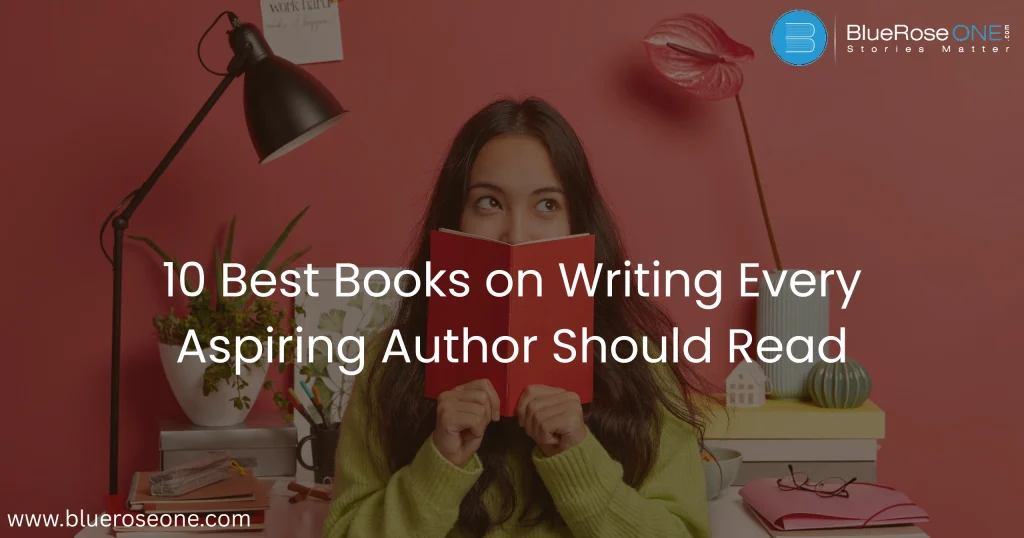
10 Best Books on Writing Every Aspiring Author Should Read
So, you want to be a writer? Great! But let’s face it, writing isn’t just sitting down and letting the words flow like magic. It’s a craft, a muscle that needs constant work, and thankfully, a whole library of wisdom is out there to help you grow. Whether you’re a budding novelist, an essayist, or a poet, the right books on writing can change your entire approach. Let’s dive into the top 10 must-reads that every aspiring author should get their hands on. Top 10 Books on Writing Every Autors Should Read 1. On Writing by Stephen King Stephen King’s On Writing is a memoir masterclass that provides useful insights into the process of writing. King recounts his journey from struggling writer to popular novelist, combining personal experiences with practical advice. The book includes important topics including syntax, storytelling, and revision, making it suitable for both new and seasoned writers. King’s conversational tone and candid observations make On Writing a fascinating and useful handbook for anybody interested about writing. You may also like: 10 Tips on How to Build a Fanbase of Readers On Writing by Stephen King – Books on Writing 2. Bird by Bird by Anne Lamott Anne Lamott’s Bird by Bird is a well-known writer’s guide that provides both practical and emotional support. Drawing on her personal experiences, Lamott emphasizes the value of approaching writing “bird by bird” — or step by step. The book covers topics like writer’s block, jealousy, and the inner critic, all with humor and honesty. Bird by Bird has become a classic for both aspiring and experienced authors, thanks to its unique blend of storytelling and teaching. Bird by Bird – Books on Writing 3. The Elements of Style by Strunk and White The Elements of Style, by William Strunk Jr. and E.B. White, is a famous guide on writing in English that was initially published in 1918 and later revised by White. This compact book provides timeless advice on grammar, composition, and style, emphasizing clarity, brevity, and proper language. Its renowned phrase, “Omit needless words,” shows its emphasis on effective communication. The Elements of Style, which is widely used by students, authors, and editors, continues to be a core reference for learning English writing. You may also read: What is New Adult Fiction? Everything You Need to Know The Elements of Style – Books on Writing 4. Writing Down the Bones by Natalie Goldberg Writing Down the Bones by Natalie Goldberg is a popular guide that combines writing guidance with Zen concepts, urging writers to build a persistent practice. The book, which was first published in 1986, focuses on freewriting—writing without judgment—as a means of unlocking creativity and silencing inner critics. Goldberg’s technique blends personal experiences, meditation, and practical activities, making it suitable for both new and experienced writers. Her concept promotes awareness and honesty, allowing authors to trust their voices and stay devoted to the process. Writing Down the Bones – Books on Writing 5. The War of Art by Steven Pressfield Steven Pressfield’s The War of Art is an inspiring book for writers, artists, and creatives who want to overcome internal resistance and realize their full potential. Pressfield identifies the psychological hurdles that impede people from pursuing their passions and refers to this force as “resistance.” He promotes discipline, routine, and a professional mindset with practical insights and motivational guidance. The book has become a modern classic, internationally acclaimed for its raw honesty and capacity to inspire long-term creative breakthroughs. You may also like: How to Publish My Book? | Self Publish Your Book | BlueRoseOne The War of Art – Books on Writing 6. Save the Cat! Writes a Novel by Jessica Brody Jessica Brody’s Save the Cat! Writes a Novel is a how-to book that adapts Blake Snyder’s well-known screenwriting method for novelists. The book describes a 15-beat tale structure to assist writers create intriguing and well-paced stories. Brody teaches each beat using familiar examples from classic novels, making the process simple to grasp and implement. This book is highly recommended for both aspiring and established authors wishing to improve their narrative abilities and produce more interesting, commercial literature. You may also read: Best Software for Typsetting Books Magazines in 2025 Save the Cat! Writes a Novel – Books on Writing 7. The Artist’s Way by Julia Cameron Julia Cameron’s The Artist’s Way is a breakthrough self-help book that outlines a 12-week approach for unlocking creativity. It was first published in 1992 and includes tools like “Morning Pages” and the “Artist Date” to assist readers in overcoming creative barriers and reconnecting with their inner artist. Cameron’s method, which combines spirituality and practical exercises, has inspired millions of authors, artists, and professionals throughout the world. The book highlights that creativity is a natural element of life and is available to everyone. You may also like: How to Write a Short Fiction The Artist’s Way by Julia Cameron – Books on Writing 8. Steering the Craft by Ursula K. Le Guin Ursula K. Le Guin’s Steering the Craft is a practical and instructive guide for writers, particularly those interested in narrative fiction. The book, which originated as a writer’s workshop, includes a series of exercises and discussions about fundamental elements such as point of view, voice, and sentence rhythm. Le Guin’s advice is clear and encouraging, combining her literary knowledge with practical approaches. It is an invaluable resource for both new and experienced writers looking to improve their skills. Steering the Craft – Books on Writing 9. Big Magic by Elizabeth Gilbert Big Magic: Creative Living Beyond Fear, by Elizabeth Gilbert, is a motivational book that delves into the mysteries of creativity. Gilbert, using personal anecdotes and practical counsel, urges people to pursue their creative passions without fear or perfectionism. She portrays creativity as a force that seeks expression in humans and encourages them to value curiosity over fear. The book has struck a chord with artists, authors, and dreamers, providing a unique viewpoint on inspiration, perseverance, and the joy of making things….
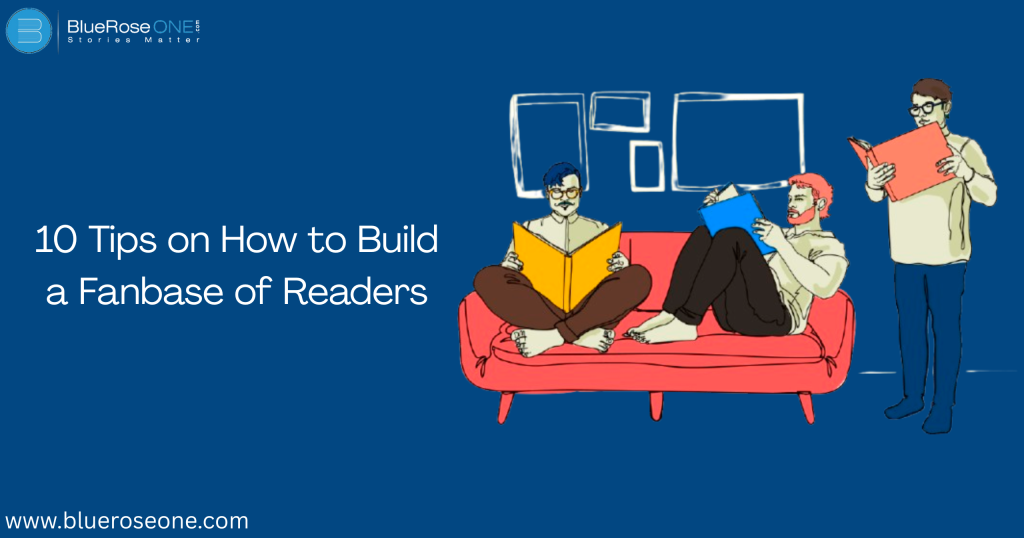
10 Tips on How to Build a Fanbase of Readers
So, you’ve written a book or maybe you’re working on one and now you’re wondering, “How do I get people to actually read it?” Building a loyal fanbase isn’t magic. It’s about creating connections, showing up consistently, and offering value that resonates. Whether you’re a new author or you’ve been around the block, these 10 tips will help you grow a reader community that sticks around. Why Building a Fanbase Matters The Power of Loyal Readers Loyal readers have the ability to broaden an author’s reach and ensure long-term success. These devoted followers frequently become champions, spreading the word about your work via word-of-mouth and social media, so attracting new readers. Their ongoing support boosts book sales, engagement, and anticipation of future releases. A dedicated fanbase also provides useful input, building a close author-reader relationship that can have a substantial impact on a writer’s creative direction and evolution. How a Fanbase Fuels Long-Term Success A loyal following is critical to fostering long-term success because it provides constant support, generates word-of-mouth promotion, and fosters a sense of community around a brand or creator. Fans not only buy products or engage with content on a regular basis, but they also act as advocates, attracting new followers. Their continued interest promotes long-term viability, allowing creators to evolve and adapt while retaining a strong foundation of trust and involvement. You may also like: How to Publish My Book? | Publish Your Book | BlueRoseOne Tip 1: Know Your Ideal Reader Define Your Target Audience Define your target audience by finding the exact readers who are most likely to relate to your genre, subjects, and writing style. Consider age, hobbies, reading patterns, and preferred platforms. Understanding who your ideal reader is allows you to personalize your content, marketing techniques, and engagement activities. A detailed audience profile ensures that your work reaches the proper people, those who will not only read your books but also become devoted supporters and champions. Create Reader Avatars Creating reader avatars is an effective technique to understand your target demographic. A reader avatar is a complete profile of your average fan, including demographics, interests, reading preferences, and obstacles. Visualizing who you’re writing for allows you to customize your tone, themes, and marketing techniques to connect with readers more effectively. This concentrated approach attracts dedicated followers who believe your work speaks directly to them, resulting in long-term engagement and support. You may also like: What is New Adult Fiction? Everything You Need to Know Tip 2: Build a Strong Author Brand Be Consistent in Voice and Design Consistency in voice and design is critical for developing a successful author brand. Your tone, graphic components, and messaging should be consistent throughout your website, social media, and published works. This consistency allows readers to identify and connect with your own style, making your brand more recognizable and trustworthy. Whether you’re producing a newsletter or posting on Instagram, a consistent presence confirms your brand and keeps your fan base engaged and returning for more. Showcase Your Personality Showcasing your personality is vital for developing a great author brand because it allows readers to connect with you on a more personal level. Whether through your writing voice, social media presence, or author bio, expressing your true personality makes you more relatable and memorable. Readers are more likely to follow and support authors who appear authentic and approachable. You may create long-term trust and loyalty by presenting yourself consistently and honestly. You may also like: Intezaar-e-Yaar a Book by Sheikh Shaista: Book Review Tip 3: Create a Compelling Website Use Your Website as Your Home Base Use your website as a hub to consolidate all of your content, updates, and offerings in one easily accessible spot. Unlike social media sites, which are subject to algorithm changes and constraints, a website allows you complete control over your brand. It acts as a foundation for followers to learn more about you, join your mailing list, and access unique content, resulting in a greater, more dedicated fanbase over time. Offer Value Through Content Offering value through content is critical for keeping people interested on your website. High-quality blog entries, videos, or free materials not only demonstrate your expertise, but also encourage people to return. Valuable content fosters trust and encourages visitors to share your work, increasing your organic reach. Content that educates or entertains, whether in the form of writing advice, behind-the-scenes insights, or exclusive previews, enhances your connection with your audience. Tip 4: Start an Email Newsletter Give People a Reason to Subscribe Give readers a compelling incentive to subscribe to your email newsletter to help you expand your fan base. Provide exclusive information like behind-the-scenes updates, exclusive discounts, and early access to new releases. This added value makes subscribers feel like insiders, which strengthens their connection to your work. When readers see the clear benefits of joining your list, they are more likely to stay engaged and spread the word, allowing you to establish a loyal and increasing following. Keep Your Emails Authentic and Useful When starting an email newsletter, it’s important to keep your emails authentic and useful. Readers are more likely to engage when your content feels personal, genuine, and tailored to their interests. Avoid overly promotional language; instead, focus on sharing behind-the-scenes updates, exclusive content, or helpful tips. Providing real value builds trust and strengthens your connection with your audience, making them more likely to support your work and spread the word. You may also read: How to Write a Short Fiction Tip 5: Be Active on Social Media (Strategically) Pick the Right Platforms Select the appropriate platforms by determining where your target audience spends the most time. Instead of trying to be active on every social media channel, focus on two or three that are relevant to your genre and content type. Instagram and TikTok, for example, are ideal for visual storytelling, whereas Twitter or Facebook may be more suited to longer-form content writers. Choosing the correct platforms increases engagement and facilitates the efficient development of a…
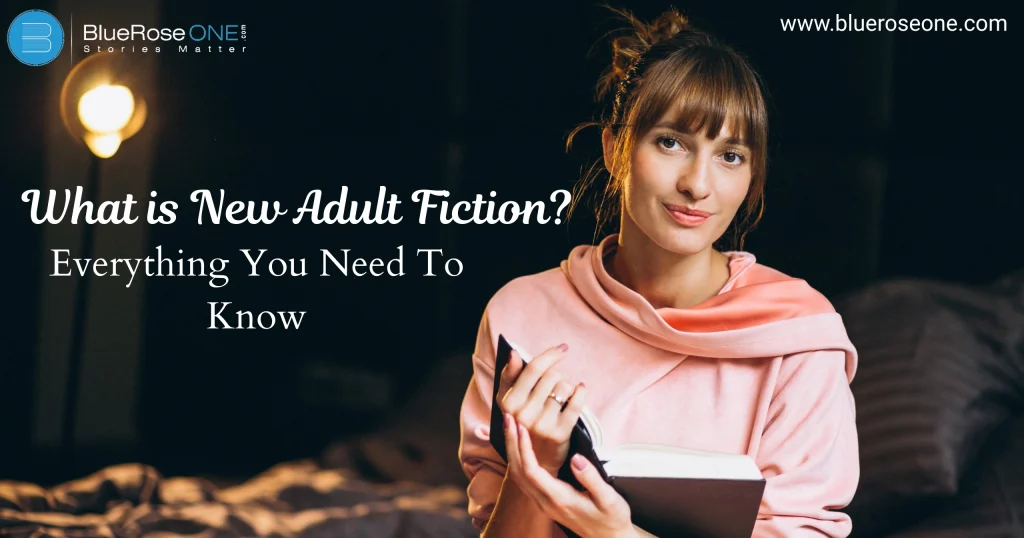
What Is New Adult Fiction? Everything You Need To Know
What does “New Adult” really mean? “New Adult” (NA) fiction is the literary middle child – not quite a teen, not fully an adult. It bridges the gap between Young Adult (YA) and Adult fiction. Typically, it focuses on characters aged 18 to 25, exploring that wild, wonderful, and confusing period of life after high school and before full-on adulthood. Defining Characteristics of New Adult Fiction Age range and protagonists New adult fiction often involves protagonists aged 18 to 30, depicting the journey from youth to maturity. These protagonists frequently encounter real-life obstacles such as college, first jobs, identity exploration, and complicated romantic relationships. The age group allows for more mature themes than young adult novels while yet appealing to readers entering early adulthood. This emphasis on life’s crucial moments makes the genre particularly relevant to its intended audience. Themes typically explored Themes often include: Identity and self-discovery First serious romantic relationships Mental health struggles Independence and freedom Career and educational challenges Differences from Young Adult and Adult fiction New Adult fiction differs from Young Adult and Adult fiction primarily in the age of its protagonists and the themes it explores. While Young Adult typically targets readers aged 12–18 and focuses on adolescence and coming-of-age experiences, New Adult features characters aged 18–30 dealing with college life, early careers, and adult relationships. Unlike Adult fiction, which often involves fully matured characters, New Adult bridges the gap, highlighting the struggles of emerging adulthood. You may also like: How to Write a Short Fiction Popular Tropes in New Adult Fiction Coming-of-age journeys Coming-of-age journeys are a hallmark of New Adult fiction, capturing the emotional and psychological growth of characters as they transition into adulthood. These narratives often explore themes like self-discovery, independence, and the trials of early adult life – college, careers, relationships, and identity. Readers connect deeply with these arcs because they mirror real-life struggles, offering both escapism and relatability. Through triumphs and failures, protagonists emerge with a stronger sense of self and purpose. Romance with emotional depth Romance with emotional depth is a hallmark trope in New Adult fiction, exploring love stories that go beyond surface-level attraction. These narratives often delve into complex emotions, past traumas, and personal growth, making the romantic connections feel authentic and intense. Characters typically face real-life challenges – such as heartbreak, loss, or identity struggles that deepen their emotional bonds. This trope resonates with readers seeking heartfelt, relatable romance that mirrors the emotional intensity of early adulthood. Self-discovery and identity One of the most prominent tropes in New Adult fiction is self-discovery and identity. These stories often explore characters navigating the transition from adolescence to adulthood, prompting questions about who they truly are and what they want from life. Themes like leaving home, starting college, or entering the workforce serve as catalysts for personal growth. This trope resonates with readers facing similar challenges, making it both relatable and emotionally impactful in the New Adult genre. You may also like: How to Publish My Book | Self Publish Your Book | BlueRoseOne Genres Within New Adult Fiction Contemporary Contemporary literature is one of the most popular New Adult literature genres, with a focus on realistic, present-day settings and contemporary life events. These stories frequently focus on college life, first jobs, romantic relationships, and the struggle to independence. The emotional depth and genuine problems of young individuals navigating maturity make this genre especially poignant. Contemporary New Adult novels generally combine romance, conflict, and personal development, providing readers with both escapism and a genuine connection to real-world issues. Fantasy and Paranormal Fantasy and Paranormal stories within New Adult fiction often blend imaginative worlds or supernatural elements with the emotional intensity of early adulthood. These genres explore themes like identity, power, and transformation, often through characters facing magical challenges alongside personal growth. Whether set in alternate realms or contemporary settings with mystical twists, fantasy and paranormal New Adult novels appeal to readers seeking escapism combined with relatable, coming-of-age experiences. Popular examples include A Court of Thorns and Roses by Sarah J. Maas. Romance and Erotica Romance and erotica are popular genres in New Adult fiction, with stories exploring passionate relationships, emotional closeness, and sexual awakening. These stories often follow protagonists in their late teens or early twenties as they navigate love, lust, and the complexities of mature relationships. The genre combines emotional depth with mature content, reflecting the changing identities and wants of young adults. Romance-driven stories are frequently strengthened with realistic conflicts, making them more accessible and emotionally compelling. Mystery and Thriller Mystery and thriller novels in New Adult fiction combine exciting narratives with the emotional intensity of early adulthood. These stories frequently follow college students or young professionals as they navigate perilous secrets, criminal investigations, or psychological tensions while coping with personal development and relationships. The genre attracts readers looking for fast-paced action with relatable heroes, combining high-stakes intrigue with the raw, formative experiences that define the New Adult age group. You may also like: How to Write Book Review Top Authors and Books in New Adult Fiction Colleen Hoover Colleen Hoover is one of the most prominent voices in New Adult fiction, known for blending emotional depth with contemporary romance. Her breakout novel Slammed introduced readers to complex young adult experiences, while later works like It Ends With Us and Verity have expanded her acclaim. Hoover’s stories often tackle real-life issues such as trauma, love, and personal growth, making her a favorite among readers navigating the transition into adulthood. Elle Kennedy Elle Kennedy is a best-selling New Adult novelist known for her compelling blend of romance, college life, and emotionally charged characters. Her Off-Campus series, which began with The Deal, has become a genre mainstay, capturing readers’ attention with relevant topics and humorous banter. Kennedy’s writing frequently explores human growth, relationships, and self-discovery, making her a popular choice among followers of current New Adult romance. Tammara Webber Tammara Webber is a prominent name in New Adult fiction, best known for her Between the Lines and Easy series. Her work…
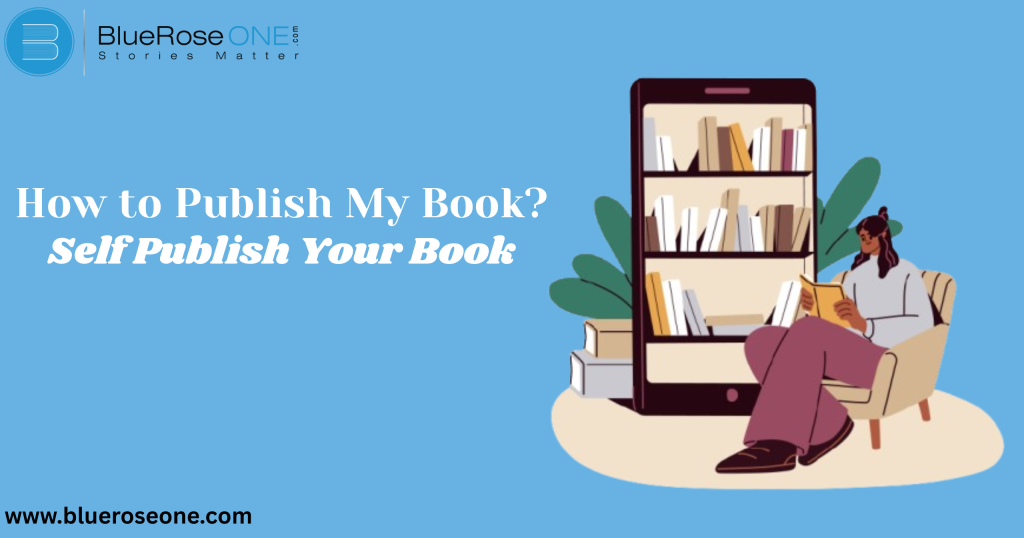
How to Publish My Book | Self Publish Your Book | BlueRoseOne
Publishing your book used to mean jumping through hoops, mailing query letters, and praying an agent picked you out of a slush pile. Today? You’ve got options. Whether you’re aiming for the prestige of traditional publishing or the freedom of going indie, you can turn that manuscript into a published book. So, how do you do it? Let’s break it down. Step 1 – Finish Your Manuscript Writing the First Draft Writing the first draft is the first step toward completing your project. At this point, don’t worry about perfection; instead, just get your ideas down on paper. Allow your imagination to flow freely, knowing that you can make changes afterward. The goal is growth, not perfection. Set realistic writing objectives and stick to them to develop momentum. Remember that you can’t publish a book before you’ve written it, so finish the first draft. Revisions and Rewrites Revisions and rewrites are required after completing your book to ensure that your tale is clear, consistent, and compelling. This step entails examining plot structure, honing character development, and tightening language. Rewriting reduces redundancy, clarifies ideas, and improves overall readability. It’s critical to approach revisions with fresh eyes and even solicit feedback from beta readers or editors. Strong changes improve your manuscript’s chances of success in the publishing process. Get Feedback from Beta Readers Once your book is finished, gathering comments from beta readers is an important next step. Beta readers provide new views and can spot story gaps, pacing flaws, and character inconsistencies you may have overlooked. Unlike experienced editors, they read like your target audience, delivering honest and valuable feedback. Their insights might help you make edits and improve the readability of your book before you submit it to publishers or self-publish it. Step 2 – Edit and Proofread Different Levels of Editing Preparing a manuscript for publication requires multiple stages of editing. Developmental editing concentrates on the big picture—structure, plot, timing, and character development. Line editing polishes the text, improving phrase structure and word choice. Copyediting evaluates grammar, punctuation, and consistency to ensure technical accuracy. The final stage is proofreading, which will catch any residual mistakes or formatting errors. Each stage is critical to improving your work before it is published. There’s more than one kind of editing: Developmental editing checks the structure and flow. Line editing polishes sentence-level writing. Copyediting cleans up grammar and typos. Hiring a Professional Editor Hiring a professional editor is vital for refining your manuscript and ensuring that it satisfies publishing requirements. An competent editor can spot grammar mistakes, improve sentence structure, and increase clarity and flow. They also offer insightful input on plot continuity, character development, and general coherence. Investing in expert editing not only enhances your work, but also raises the likelihood that it will be approved by publishers or resonate with readers in the self-publishing industry. DIY Editing Tips DIY editing is a critical step in getting your work ready for publication. Begin by reading your novel aloud to identify difficult language and grammar mistakes. Use editing tools like Grammarly or Hemingway Editor to identify frequent errors. Each chapter should be clear, consistent, and paced. Take breaks between editing sessions to keep a fresh viewpoint. Finally, print or convert your text to a different format to make it easier to identify neglected problems. Step 3 – Choose Your Publishing Path Traditional Publishing Overview Traditional publishing involves partnering with an established publishing house that manages editing, design, printing, distribution, and marketing. Authors typically secure a literary agent who submits the manuscript to publishers. If approved, the publisher issues a contract and frequently provides an advance on future revenues. This route offers professional credibility and wider bookstore access, but it can be highly competitive and time-consuming, with limited creative control and lower royalty percentages compared to self-publishing. You’ll need: A query letter A synopsis Patience (lots of it) Agents can help you land a deal with a major publisher, but it’s competitive. Self-Publishing Explained Self-publishing gives authors entire control over the publishing process, including editing, cover design, pricing, and distribution. Unlike traditional publication, it does not require the approval of a literary agent or publisher. Platforms like Amazon Kindle Direct Publishing (KDP) and IngramSpark make it simple to publish both eBooks and printed books. While self-publishing provides better royalty rates, authors must handle marketing, production costs, and quality control on their own. Hybrid Publishing: The Middle Road Hybrid publishing offers a balanced approach between traditional and self-publishing, allowing authors to maintain creative control while benefiting from professional services. This model combines the author’s investment with the publisher’s expertise, providing editorial, design, and marketing support. It’s ideal for writers seeking a middle ground—access to industry knowledge without relinquishing full ownership of their work. Hybrid publishing is increasingly popular for authors aiming for more control over their publishing journey. Step 4 – Prepare Your Manuscript for Submission or Upload Formatting for Agents or Publishers When submitting your manuscript to agents or publishers, proper formatting is essential. Most agents and publishers prefer submissions to follow specific guidelines, such as using standard fonts like Times New Roman, 12-point size, and double-spacing. Margins should be 1 inch on all sides, with the title, author name, and page number in the header. Always check submission guidelines carefully to ensure your manuscript meets the requirements, increasing your chances of being considered. Formatting for Amazon KDP and Other Platforms When preparing your manuscript for Amazon KDP and other platforms, proper formatting is essential to ensure a professional and seamless reading experience. This involves using the correct font, margins, and spacing. For KDP, a popular choice is to format in .docx or .epub format, keeping consistent chapter headings and page breaks. Make sure your file is properly aligned for e-readers, optimizing for Kindle and other devices. Each platform has specific formatting guidelines, so always double-check before uploading. Choosing the Right File Type Choosing the right file type is essential when preparing your manuscript for submission or upload. Different publishers and platforms may…
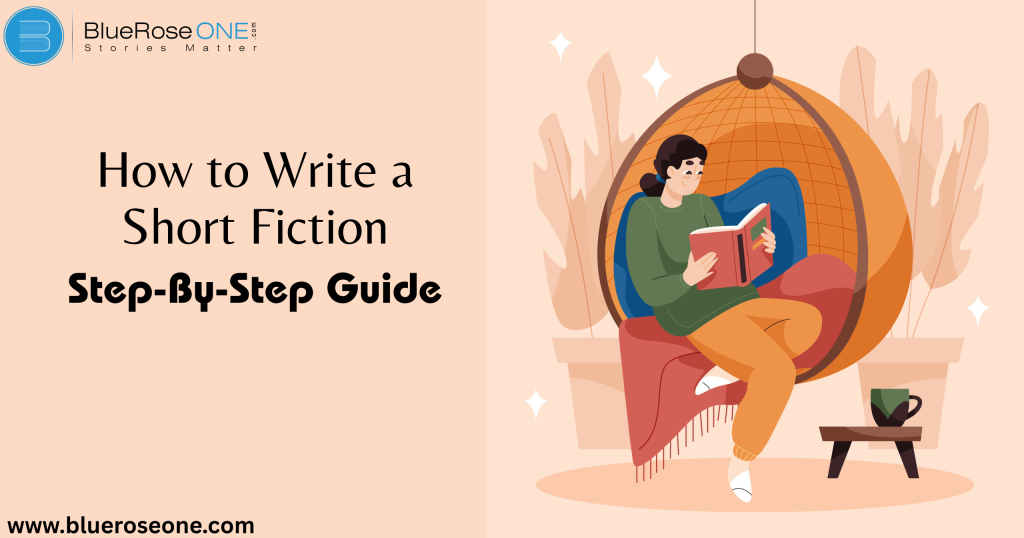
How to Write a Short Fiction
What is Short Fiction? Short fiction is a complete story told in a brief word count usually under 7,500 words. It’s a condensed form of storytelling where every word counts. You still get plot, character, and emotion, but with a tighter focus. Short Fiction vs. Novel The primary difference between short stories and novels is their length, scope, and narrative depth. While short fiction focuses on a single moment, theme, or character arc (generally around 7,500 words), a novel delves into several plotlines and character developments over a longer period of time, typically exceeding 50,000 words. Short tales require precise storytelling, with each word serving a purpose, making them great for experimenting with concepts, tones, or styles without committing to a full-length novel. You may also like: Latest Sahitya Akademi Award Winners List (Updated) Common Types of Short Fiction Flash Fiction: Less than 1,000 words Short Story: 1,000–7,500 words Novelette: 7,500–20,000 words Why Write Short Fiction? Short fiction allows writers more freedom to experiment with style, voice, and structure. Unlike novels, which frequently adhere to more rigid patterns, short stories allow authors to explore unorthodox tales or concentrate on a single moment or concept. This independence fosters creativity and risk-taking, making short fiction an important avenue for development. Whether you’re trying out new genres or honing your voice, short stories are a versatile and manageable way to polish your art. Great Practice for Aspiring Writers Short fiction is excellent exercise for aspiring writers because it allows them to master important storytelling abilities in a compact format. Writing short tales improves a writer’s ability to create engaging storylines, quickly develop characters, and stay focused on a single theme. Because of their brevity, short stories allow writers to experiment with style, tone, and structure without the long-term commitment of a novel, making them excellent for developing confidence and technique. You may also read: What is Typesetting? A Beginner’s Guide to Perfect Page Layout. Step-by-Step Guide to Writing Short Fiction Step 1: Start with a Strong Idea Every excellent short tale starts with a fascinating concept. Since short fiction has limited space, your central concept should be focused, engaging, and thought-provoking. Consider themes, characters, or situations that evoke strong emotions or raise intriguing questions. A strong idea often stems from a “what if” scenario, a personal experience, or an unexpected twist. This foundation sets the tone, direction, and impact of your entire narrative. Brainstorming Tips Think about personal experiences. Ask “What if” questions. Mash up two unrelated ideas. Using Prompts and Inspiration Browse writing prompt websites, read headlines, or even scroll social media for interesting images or quotes. You may also read: Intezaar-e-yaar Book by Shaikh Shaista: Book Review Step 2: Define Your Characters Strong characters are essential in short fiction, even with limited word count. Focus on your protagonist’s goals, motivations, and internal or external conflicts. Well-defined characters help drive the plot forward and create emotional depth. Consider their backstory, personality traits, and relationships to other characters. In short fiction, every detail matters so choose attributes that enhance your story’s theme and keep the narrative tight and engaging. Main Character and Motivation: Focus on one main character. What do they want? What’s stopping them Keep Supporting Cast Minimal: Too many characters can clutter your short story. Two or three is usually plenty. Step 3: Choose the Right Setting Your short fiction’s environment affects the mood, the actions of the characters, and the plot. Whether it’s a bustling city street or a quiet village, the setting should serve the story’s theme and conflict. Choose a place and time that enhances emotional impact and tension. In short fiction, every detail counts so focus on vivid, concise descriptions that immerse readers without overwhelming them. A well-chosen setting can elevate even the simplest plot. You may also like: How to Write a Book Review. Step 4: Outline Your Plot Outlining your plot is essential for maintaining focus and pacing in short fiction. Since short stories have limited space, every scene must serve a purpose. Create a clear beginning, middle, and end, and identify key plot points like the inciting incident, climax, and resolution. This structure helps you organize your ideas, avoid plot holes, and build tension effectively, ensuring your story remains engaging from start to finish. Plot is your roadmap even in short fiction. Basic Plot Structure Beginning: Hook and setup Middle: Conflict rises End: Resolution or twist Focus on One Conflict Don’t try to cover too much ground. Stick with one major conflict and resolve it powerfully. You may also read: Best Software for Typesetting Books and Magazines in 2025 Step 5: Write an Attention-Grabbing Opening The opening of your short fiction should immediately capture the reader’s attention. Start with an intriguing sentence, an unexpected twist, or a vivid description that sparks curiosity. A strong opening sets the tone for the entire story, introduces key characters or conflicts, and pulls readers into the narrative. Aim to establish the fundamental question or feeling of your tale, which will entice readers to continue reading. Step 6: Build a Tight Narrative A key element of successful short fiction is a tight narrative. This means ensuring every sentence contributes to the story’s central theme or plot. Avoid unnecessary subplots or overly complex details that might distract the reader. Focus on concise language and clear character development, maintaining pacing that keeps readers engaged. A well-structured narrative helps ensure your story remains impactful while fitting within the limited space of short fiction. You may also like: Top 20 Best Mystery Thriller Books You Need to Read in 2025 Step 7: Deliver a Powerful Ending A solid ending leaves a lasting effect on readers and brings your story together. In short fiction, every word counts, so your conclusion should be both impactful and brief. Whether it’s a twist, a moment of emotional clarity, or an open-ended observation, make sure it fits with the topic. A strong conclusion gives closure while reinforcing your key idea, providing your story depth and memorability in a few lines. Leave your reader…
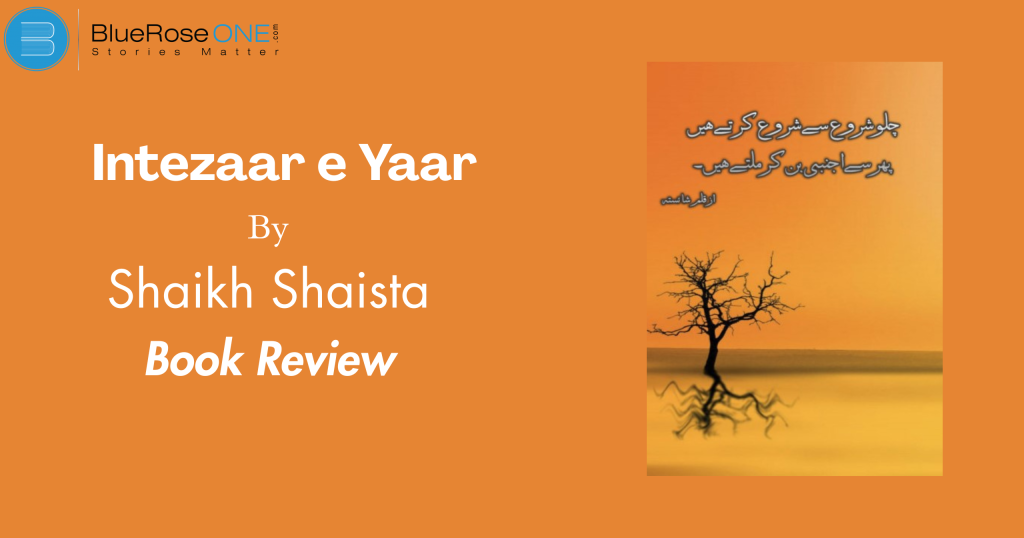
Intezaar-e-Yaar a Book by Shaikh shaista: Book Review
Title: Intezaar-e-Yaar Author: Shaikh Shaista Genre: Contemporary Urdu Fiction / Romantic Drama Ratting: (4/5) Summary: Intezaar-e-Yaar is a poignant Urdu novel by Shaikh Shaista that explores the emotional terrain of love, longing, and loss through the eyes of a strong yet vulnerable female protagonist. Set against the backdrop of modern-day societal expectations, the book traces the journey of a woman navigating the bittersweet realms of waiting, for love, for closure, for fulfillment. Without giving away too much, the novel gracefully captures the emotional highs and lows of human relationships, especially unreciprocated or unfinished ones. Shaista’s poetic storytelling style, mixed with deep cultural undertones, makes this work a moving read for fans of soulful Urdu literature. You may also read: Top 20 Best Mystery Thriller Books You Need to Read in 2025 What we liked: 1. The Language and Style: Shaikh Shaista’s writing is effortlessly lyrical. Her writing is greatly influenced by classical Urdu poetry, but it still feels new and contemporary. The phrases flow like poetry, with metaphors and poetic expressions that add to the narrative’s emotional depth. The title, Intezaar-e-Yaar (The Waiting for the Beloved), captures the book’s thematic core, and the author gives it honor with her polished mastery of language. 2. Deep Emotional Resonance: The strength of this book lies in its emotional intelligence. Every character, especially the protagonist, is painted with layers of feelings, conflict, regret, hope, and resilience. The story doesn’t rush. It allows readers to join the characters in their stillness, memories, and periods of waiting. Readers who have experienced unfulfilled love or the ache of waiting for someone will deeply connect with the story. 3. Cultural Richness: Shaista beautifully embeds Urdu culture and traditions into her narrative. From the descriptions of chai gatherings to classical ghazals playing in the background during moments of reflection, the novel feels like a tribute to a culturally rich way of living and loving. The customs, the language, and the emotional etiquette of desi relationships are all depicted with authenticity and grace. You may also read: Top 15 Short Novels to Read in a Weekend 4. Realistic Characterization: The protagonist is a refreshing departure from the stereotypical romantic leads often found in contemporary Urdu fiction. She is introspective, strong-willed, and self-aware. Even in her vulnerability, she exudes dignity. The supporting characters, too, are well-sketched, particularly the family dynamics and friendships that shape her emotional world. 5. Universal Themes: Though rooted in an Urdu-speaking, South Asian context, the themes of Intezaar-e-Yaar are universal. Love, loss, time, and memory are concepts that transcend geography and language. Readers from different cultural backgrounds can still find a piece of themselves in this story. You may also like: How to Write a Book Review What Didn’t Work for Us: 1. Pacing Issues in the Middle: While the poetic style adds beauty, it also affects the pacing in some parts. The middle sections of the book slow down considerably. Long internal monologues, though emotionally rich, occasionally disrupt the forward momentum of the plot. A tighter edit could have helped maintain the narrative energy. 2. Predictable Plot Points: At times, the storyline falls back on familiar tropes of unrequited love and emotional suffering, which seasoned readers of the genre might find slightly predictable. Although the delivery is elegant, some turns in the story feel like déjà vu from other romantic dramas in Urdu literature. 3. Supporting Characters Could Have Been More Developed: While the protagonist is deeply fleshed out, some of the supporting characters, particularly the love interest, remain somewhat distant. The emotional impact might have been greater if more insight was given into their motivations and inner worlds. You may also like: Best Software for Typsetting Books and Magazines in 2025 Final Thoughts: Intezaar-e-Yaar is a touching, poetic exploration of waiting—not just for love, but for closure, self-understanding, and emotional healing. Shaikh Shaista has crafted a novel that reads like a long, heartfelt letter filled with nostalgia, yearning, and introspection. It is a celebration of feminine emotional strength and a tribute to Urdu literary tradition. This book is best suited for readers who enjoy reflective, character-driven narratives and are comfortable with a slower, more poetic pace. If you’re a fan of Urdu literature, especially writers like Bano Qudsia, Parveen Shakir, or Khalida Hussain, you’ll find Shaikh Shaista’s voice both familiar and refreshing. In a world increasingly obsessed with fast-paced thrillers and plot-heavy novels, Intezaar-e-Yaar is a gentle reminder that sometimes, the most profound stories are the quietest ones. It invites you to pause, reflect, and remember your own experiences of waiting—for a person, a feeling, or even a better version of yourself. You may also read: The Mighty Red by Louise Erdrich: A Deep Dive into Her Latest Novel Recommended for: Lovers of Urdu fiction and poetry Readers who enjoy emotional, introspective narratives Fans of slow-burn romantic dramas Anyone who has ever waited for something or someone with all their heart
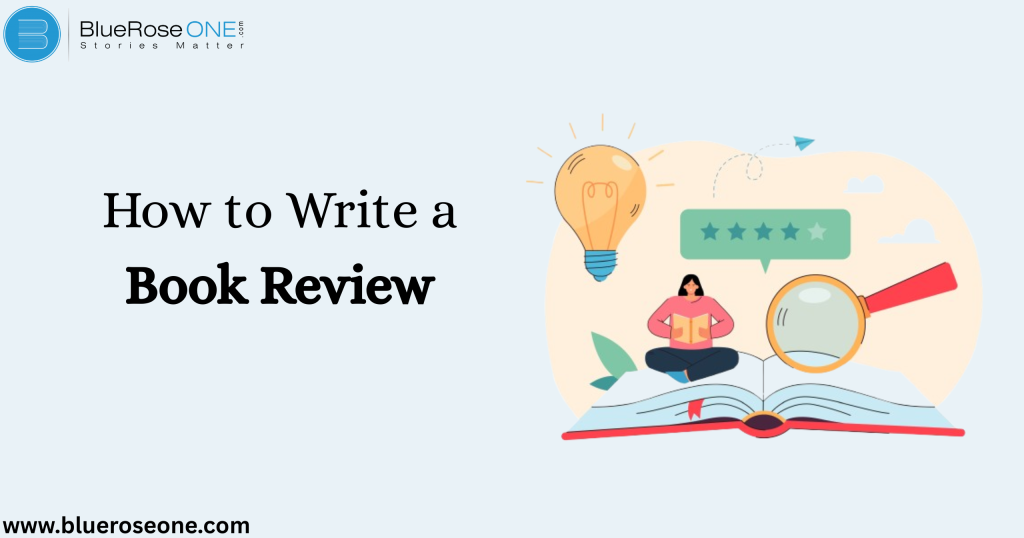
How to Write a Book Review
Have you ever finished a book and felt compelled to express your thoughts? That is precisely where a book review comes in. A book review allows you to go into the pages and tell others what worked, what didn’t, and whether it should be added to their reading list. Book reviews are not only for critics. Whether you’re a casual reader, a student, or a blogger, learning how to write a book review can help you connect with other readers, improve your analytical skills, and possibly influence someone else’s next great read. Preparing to Write the Review Choose the Right Book Choosing the right book is the first step toward writing a relevant review. Choose a book that actually interests you or falls within your favored genre, as your involvement will show in your writing. Consider the book’s relevancy, popularity, or literary worth, particularly if your review is intended for a larger audience. Reading a well-reviewed or recently published book can also bring new perspectives and make for a more powerful review. Read Actively and Take Notes To write an interesting book review, you should read actively and take extensive notes. Active reading entails engaging with the material, highlighting crucial passages, noting character developments, and writing down your reactions. Take note of the themes, writing style, and any questions that may arise. This helps you remember key points and generate critical thoughts. By the end of the book, your notes will provide a solid framework for writing your review. Understand the Genre and Context Before writing a book review, it is critical to comprehend the genre and context of the work. Knowing if it’s a mystery, romance, historical fiction, or nonfiction influences how you rate it. Each genre adheres to distinct conventions and reader expectations. Consider the author’s history, the time period in which the book was written, and the target audience. This context enables you to deliver a more accurate and informative review. You may also like: Best Software for Typesetting Books and Magazines in 2025 Key Elements of a Book Review Book Information Start by stating the basics: Title Author Genre Publication date and publisher This helps your reader get oriented right away. Summary of the Book Before writing your review, create a quick synopsis of the book. This provides context for those who are unfamiliar with the story. An excellent synopsis highlights the primary narrative, setting, key characters, and central conflict while avoiding spoilers. Concentrate on the author’s intention and the overall direction of the story. This section should be succinct, objective, and informative, allowing readers to grasp the book’s thesis at a glance. You may also read: Top 20 Best Mystery Thriller Books You Need to Read in 2025 Evaluation of Key Elements Plot The plot is the foundation of any story, directing the reader through a series of events that shape the narrative. In a book review, evaluating the plot entails examining its structure, pacing, and cohesiveness. Reviewers should assess if the plot flows logically, maintains tension, and effectively resolves conflicts. A well-written storyline keeps readers interested, but a weak or disconnected one might diminish the book’s overall impact. Characters Character development is an important aspect to consider while writing a book review. Well-crafted characters propel the plot and elicit emotional responses from readers. Determine whether the characters are credible, consistent, and develop meaningfully over the story. Consider how the author depicts their goals, connections, and dialogue. Strong character development adds dimension to the plot, whereas flat or stereotypical characters reduce its overall impact. Write Style When assessing a book’s writing style, evaluate the author’s tone, language, and sentence structures. Is the prose formal or conversational? Does it flow well or feel disjointed? A strong writing style increases reader engagement and reflects the book’s atmosphere or genre. Highlight how effectively the author employs literary devices, dialogue, and narrative voice, as well as whether the style matches the story’s subjects and target audience. Themes Themes are important in every book review since they reflect the author’s underlying message or main ideas. When examining themes, think about how well the work covers topics like love, identity, power, and morality. Consider whether the ideas are well-developed, pertinent to the plot, and have an emotional or intellectual resonance with the reader. Highlighting the primary themes helps readers grasp the book’s underlying meaning and value. Your Personal Opinion When writing a book review, you must communicate your personal opinion. It gives authenticity and allows readers to see your unique point of view. Be honest about what you liked and disliked, but back up your points with real instances from the book. This not only improves your argument, but also makes it easier for readers to understand your position. Balancing personal opinion with constructive criticism is essential for creating an insightful and entertaining review. Strengths & Weakness When assessing a book’s merits and shortcomings, consider factors such as character development, plot structure, writing style, and pacing. Strong points may include interesting characters, engaging language, or a distinct narrative voice. Weaknesses, on the other hand, may include predictable narratives, underdeveloped characters, or poor pacing. A well-rounded review emphasizes both the positive and bad parts of the work, providing readers with a balanced assessment of its overall influence. Final Recommendation In the final paragraph of your book review, state if you would recommend the book to others. Consider the intended audience, subjects, writing style, and overall impact. A balanced approach that recognizes both strengths and shortcomings is essential. Whether you suggest the book or not, explain your reasons so that readers can decide if it matches their choices or interests. You may also like: Latest Sahitya Akademi Awards Winners List (Updated) Structuring Your Book Review Introduction Paragraph The first paragraph of your book review establishes the context for your analysis. It should include the book’s title, author, and genre, as well as a concise storyline summary that does not reveal too much. This is where you capture the reader’s attention by introducing the story’s theme…
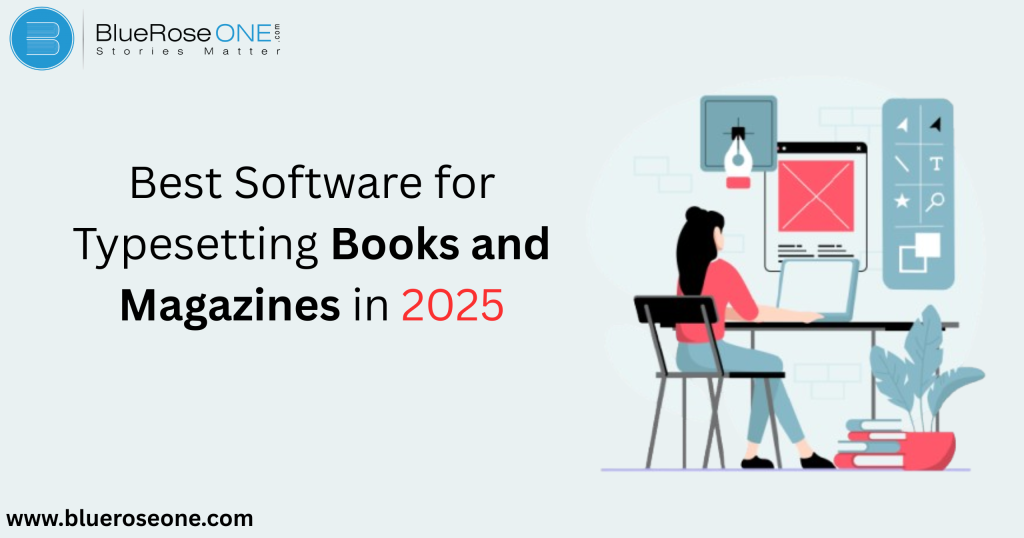
Best Software for Typesetting Books and Magazines in 2025
So, you’re ready to bring your book or magazine to life but before it hits the shelves (or digital storefront), there’s one crucial step: typesetting. This isn’t just about putting text on a page. It’s about formatting it beautifully and making it reader-friendly. But with all the tools out there, how do you pick the right one? Let’s break down the best typesetting software in 2025 for books and magazines, so you can create something polished and professional without pulling your hair out. What is Typesetting? Typesetting is the process of organizing text, graphics, and other elements on a page. It ensures that your material is clear, readable, and visually appealing, whether in print or digital mode. Consider it like sprucing up your words. You wouldn’t wear pajamas to a job interview, right? Same goes for your book or magazine. Key Features to Look for in Typesetting Software User Interface and Ease of Use A user-friendly interface is essential when choosing typesetting software, especially for authors and designers without advanced technical skills. In 2025, top tools prioritize intuitive layouts, drag-and-drop features, and customizable templates to streamline the design process. Clear navigation and accessible toolbars improve workflow efficiency, reducing the learning curve for beginners. The best software balances functionality with simplicity, enabling users to focus on content and design without being overwhelmed by complex settings. Layout Precision and Control Layout precision and control are critical in typesetting software, particularly for book and magazine publication. The greatest tools provide precise control over spacing, margins, kerning, leading, and alignment, resulting in a clean, professional appearance. Advanced features like grid systems, master pages, and baseline alignment aid in visual uniformity across multiple pages. In 2025, top typesetting programs will focus precision to smoothly accept complicated layouts and different print or digital formats. Compatibility with Publishing Formats When choosing typesetting software in 2025, compatibility with multiple publishing formats is essential. The best tools support a range of formats, including PDF for print, EPUB for eBooks, and MOBI for Kindle. This ensures your content remains consistent across platforms and devices. Seamless export options reduce the need for additional conversion tools, streamlining the publishing process and saving time for authors, editors, and designers alike. Font and Typography Support Robust font and typography support is essential in typesetting software, especially for books and magazines that demand professional presentation. Look for software that offers access to a wide range of fonts, OpenType features, and kerning tools to enhance readability and visual appeal. Advanced typography options like ligatures, hyphenation control, and baseline adjustments ensure precise text alignment and consistent style across pages, which is crucial for maintaining a polished, publication-ready layout. Collaboration and Cloud Integration Modern typesetting software should include sophisticated collaboration and cloud integration features to enable real-time collaborations across several locations. Authors, designers, and editors can all work on the same project at the same time using cloud-based technologies, which speeds up revisions and reduces version control concerns. Look for software that offers shared access, automated syncing, and cloud storage compatibility with platforms such as Google Drive and Dropbox. These possibilities increase efficiency, particularly for publishing teams that work remotely or across time zones. Cost and Licensing Options When picking typesetting software in 2025, it is critical to consider pricing and licensing alternatives. Some tools need a one-time payment, but others function on a subscription basis with monthly or annual fees. Open-source alternatives, like LaTeX, are free but may require more technical knowledge. Check whether the license allows for business use, multiple device installations, or team cooperation. Understanding this information helps to guarantee that the software meets your budget and publishing requirements. You may also read: What is Typesetting? A Beginner’s Guide to Perfect Page Layouts Best Typesetting Software for Books in 2025 Adobe InDesign Adobe InDesign remains one of the best typesetting software choices for books in 2025, widely used by professional publishers and designers. It offers precise control over typography, layout, and formatting, making it ideal for both print and digital publications. With features like master pages, paragraph styles, and seamless integration with Adobe Creative Cloud, InDesign streamlines the book production process. Its support for EPUB and PDF export also enhances accessibility and publishing flexibility. Pros Industry standard Full layout control Robust templates and styles Cons Expensive subscription Learning curve for beginners Best Use Cases Perfect for authors, publishers, and designers creating complex layouts, novels, or print-ready interiors. You may also like: Latest Sahitya Akademi Award Winners List (Updated) Affinity Publisher In 2025, Affinity Publisher is a popular and reasonably priced typesetting software suitable for book and magazine design. Serif created professional layout tools, master pages, powerful typography, and seamless integration with Affinity Photo and Designer. Its user-friendly interface and one-time payment approach make it an affordable alternative to Adobe InDesign. Affinity Publisher delivers print-ready exports, making it ideal for self-publishers and small presses looking for high-quality results without a subscription. Pros One-time payment Intuitive interface Integrates with Affinity Photo and Designer Cons Fewer plugins Less common in professional workflows Best Use Cases Ideal for indie authors and self-publishers who want pro tools without a subscription. Vellum (Mac Only) Vellum (Mac Only) is a high-end typesetting software built just for macOS users. Vellum is well-known for its user-friendly interface, making it simple to generate professional-quality eBooks and print books. It provides a variety of pre-designed templates, making formatting simple and quick. Vellum, designed for self-published authors, ensures that your manuscript appears professional with features such as automatic chapter breaks, configurable font styles, and smooth export options. However, it is only available for Mac, which limits its accessibility. Pros Beautiful output for EPUB and print Extremely user-friendly Quick previews Cons Mac-only Limited design flexibility compared to InDesign Best Use Cases Ideal for indie authors and self-publishers who want pro tools without a subscription. You may also read: WhiteSmoke Review: Feature, Pricing, Pros & Cons Scrivener + Compile Tools Scrivener, coupled with its powerful Compile tool, is a top choice for authors looking to format and export their manuscripts….
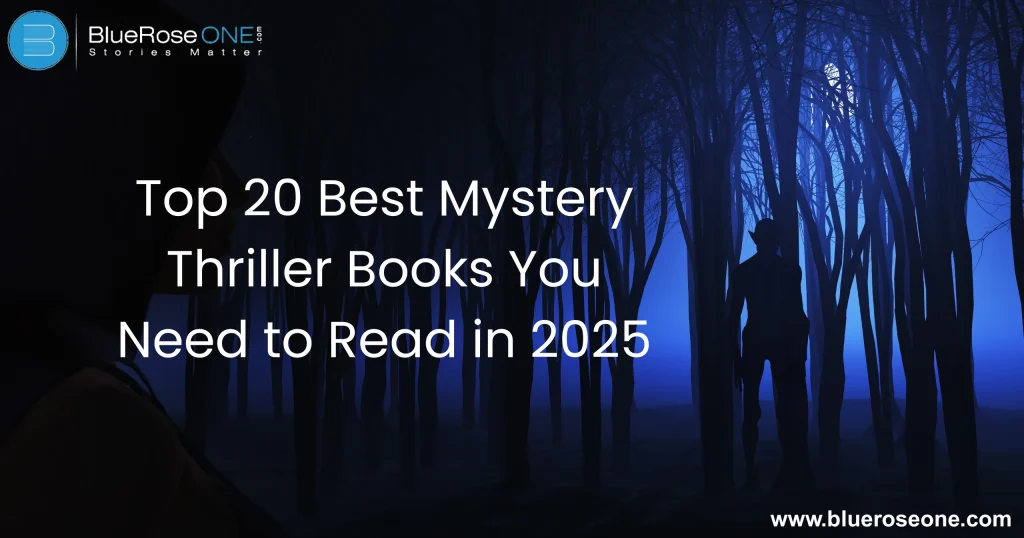
Top 20 Best Mystery Thriller Books You Need to Read in 2025
Have you ever found yourself captivated by a book, heart racing, desperate to know what happened next? That is the magic of a great mystery thriller. It’s the itch you can’t seem to scratch, the burning curiosity that only the last page can fulfill.Mystery thrillers masterfully balance suspense, character emotions, and plot twists. They play with our minds, make us question everything, and when done right, leave us gasping in awe. Who doesn’t love a good brain teaser mixed with adrenaline? Top 20 Mystery Thriller Books to Read in 2025 1. The Silent Patient by Alex Michaelides Alex Michaelides’ debut novel, The Silent Patient, is a powerful psychological thriller that has gripped readers worldwide. The plot revolves around Alicia Berenson, a renowned painter who becomes mute after murdering her husband and refuses to explain her actions. Criminal psychologist Theo Faber gets obsessed with discovering the truth behind her silence, which leads him down a journey full of unexpected turns and personal disclosures. With its convoluted narrative and devastating ending, The Silent Patient is a captivating book that cements its place among the best mystery thrillers of recent years. You may also like:What is Typesetting? A Beginner’s Guide to Perfect Page Layouts The Silent Patient – Best Mystery Thriller Books 2. The Last Word by Taylor Adams Taylor Adams’ The Last Word is a gripping psychological thriller that delves into the dangers of online interactions and the blurred lines between fiction and reality. The story follows Emma Carpenter, a grieving woman seeking solitude in a remote beach house, who becomes the target of a deranged author after posting a scathing review of his novel. As the tension escalates, Emma must confront not only the external threats but also her own inner demons. Adams masterfully crafts a narrative filled with unexpected twists, keeping readers on edge until the very end. This novel stands out as a must-read for thriller enthusiasts in 2025. You may also like: Fifty Shades of Grey: Book Review | BlueRoseOne The Last Word – Best Mystery Thriller Books 3. Before She Knew Him by Peter Swanson Peter Swanson’s Before She Knew Him is a masterclass in psychological suspense, earning its place among the top mystery thrillers to read in 2025. The novel follows Hen, an illustrator with a history of bipolar disorder, who suspects her neighbor Matthew of murder after recognizing a trophy linked to an unsolved crime. As Hen delves deeper, her credibility is questioned due to her mental health history, creating a tense narrative that blurs the line between reality and paranoia. Swanson’s intricate plotting and exploration of obsession and trust make this a compelling read for thriller enthusiasts. Before She Knew Him – Best Mystery Thriller Books 4. The Puzzle Master by Danielle Trussoni Danielle Trussoni’s The Puzzle Master is a genre-blending thriller that follows Mike Brink, a puzzle prodigy with acquired savant syndrome after a traumatic brain injury. When he’s asked to decode a mysterious drawing by Jess Price, a silent inmate convicted of murder, Brink is pulled into a labyrinth of ancient mysticism, secret societies, and supernatural intrigue. The novel masterfully intertwines Jewish Kabbalah, haunted artifacts, and high-stakes conspiracies, making it a standout pick for mystery and thriller fans in 2025. You may also like: WhiteSmoke Review: Features, Pricing, Pros & Cons The Puzzle Master – Best Mystery Thriller Books 5. The Maid by Nita Prose The Maid by Nita Prose is a charming cozy mystery about Molly Gray, a hotel maid who discovers the body of a wealthy guest in his suite. Molly’s literal-mindedness and distinct viewpoint make her an unusual suspect and atypical sleuth. Set against the luxurious setting of the Regency Grand Hotel, the novel blends conventional whodunit themes with emotional character development. The Maid was praised by critics and readers alike, winning the Goodreads Choice Award for Mystery & Thriller in 2022, and it has been optioned for a film adaptation starring Florence Pugh. The Maid – Best Mystery Thriller Books 6. None of This Is True by Lisa Jewell Lisa Jewell’s None of This Is True is a psychological thriller that explores identity, manipulation, and the ambiguity of truth against deception. The story follows Alix Summer, a prominent podcaster, as she meets Josie Fair, an enigmatic woman celebrating her 45th birthday. Alix is intrigued by Josie’s idea to showcase her life story, so she launches a podcast series that gradually reveals Josie’s terrible secrets. As their lives converge, Alix becomes entangled in a web of obsession and deception, culminating in a disturbing climax that calls into question the veracity of tales and the perils of unrestrained trust. You may also like: List of Top 10 Jhumpa Lahiri Books of All Time None of This Is True – Best Mystery Thriller Books 7. A Death at the Party by Amy Stuart Amy Stuart’s single-day thriller, A Death at the Party, follows Nadine Walsh, who discovers a dead corpse in her basement during her mother’s 60th birthday party. As the day progresses, secrets from Nadine’s past emerge, mixing with current tensions and familial relationships. Stuart’s story, reminiscent of Virginia Woolf’s Mrs. Dalloway, expertly balances suspense and psychological depth, making it an engaging read for aficionados of home thrillers. A Death at the Party – Best Mystery Thriller Books 8. The It Girl by Ruth Ware In The It Girl (2023), Ruth Ware delivers a compelling psychological thriller set against the backdrop of Oxford University. The story follows Hannah Jones, whose life is upended when her vivacious roommate, April Clarke-Cliveden, is murdered. A decade later, as Hannah prepares for motherhood, new evidence emerges suggesting that the man convicted of April’s murder may have been innocent. This revelation forces Hannah to confront her past and the secrets of her former friends. Ware masterfully intertwines themes of guilt, memory, and betrayal, keeping readers on edge with her signature suspense and intricate plotting. You may also like: A Complete List of Anuja Chauhan Books The It Girl – Best Mystery…
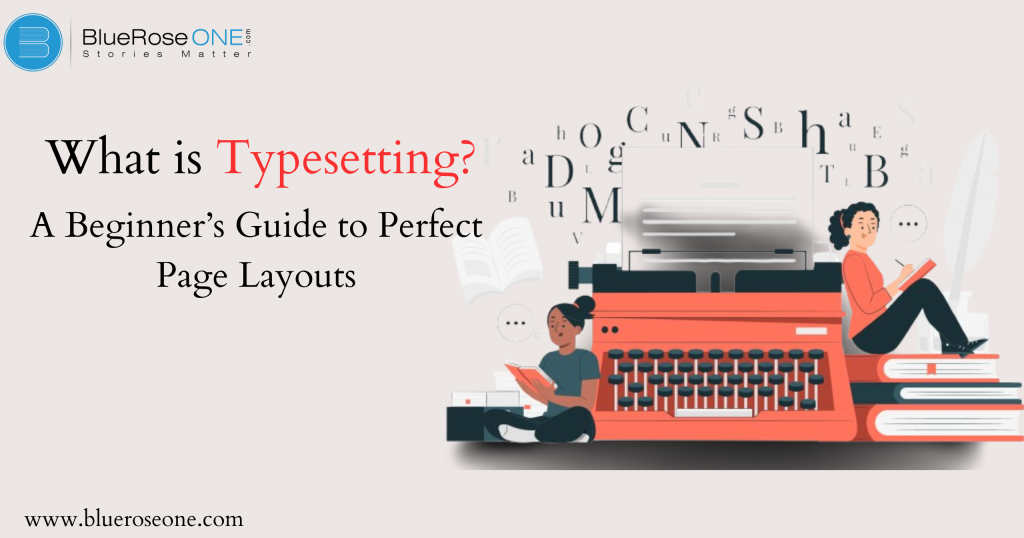
What Is Typesetting? A Beginner’s Guide to Perfect Page Layouts
Understanding in the Basics Imagine trying to read a book where the letters are all crammed together or the lines are unevenly spaced. Annoying, right? That’s where typesetting comes in! It’s the process of arranging text on a page so it’s not just readable, but also visually appealing. Think of it like setting the stage for your words to perform at their best. A Quick History of Typesetting Typesetting has been around for centuries. It started with movable type invented by Gutenberg in the 15th century and evolved into the digital layouts we use today. From lead blocks to Adobe InDesign, the journey of typesetting mirrors the journey of communication itself. You may also like: Latest Sahitya Akademi Awards Winners List (Updated) Why Typesetting Matters First Impressions Count First impressions are important in typesetting since a reader’s experience begins when they open a book or document. A clean, well-organized layout immediately establishes trust and encourages readers to continue. Poor typesetting, on the other hand, can make even the best information appear unprofessional, causing misunderstanding or irritation immediately away. Enhancing Readability Typesetting is important for several reasons, one of which is to improve readability. Good typesetting organizes material so that the reader’s eye moves naturally across the page. Proper font selection, line spacing, margins, and paragraph breaks all contribute to a more enjoyable reading experience. Clear and intelligent typesetting not only increases comprehension, but also keeps readers engaged, allowing them to focus solely on the content rather than the layout. You may also like: WhiteSmoke Review: Features, Pricing, Pros and Cons Key Components of Typesetting Fonts and Typography Fonts and typography are critical in typesetting because they influence readability, tone, and visual appeal. Choosing the appropriate font type, size, and spacing ensures that the text is easy to read and serves the intended purpose. Serif typefaces are often suitable for printed publications, although sans-serif fonts are preferred in digital versions. To achieve a polished, professional appearance, good typography requires careful consideration of line spacing, kerning, and alignment. Line Spacing and Leading Fonts and typography are critical in typesetting because they influence readability, tone, and visual appeal. Choosing the appropriate font type, size, and spacing ensures that the text is easy to read and serves the intended purpose. Serif typefaces are often suitable for printed publications, although sans-serif fonts are preferred in digital versions. To achieve a polished, professional appearance, good typography requires careful consideration of line spacing, kerning, and alignment. Margins and Alignment Margins and alignment are key typesetting components that influence a page’s overall appearance and readability. Margins form a neat boundary around text, preventing overcrowding and allowing the eyes to rest. Proper alignment, whether left, right, centered, or justified, organizes text in a way that promotes flow and consistency. Margins and alignment work together to improve a document’s visual harmony while also guiding readers smoothly through the material, resulting in a pleasant reading experience. Kerning and Tracking Kerning and tracking are important features of typesetting because they determine letter spacing. Kerning alters the spacing between individual letter pairings to provide a more visually balanced appearance, particularly in headlines and logos. Tracking, on the other hand, changes the spacing consistently across a range of characters, influencing the overall density of the text. The proper use of kerning and tracking increases readability, design aesthetics, and provides a professional, polished layout. You may also read: A Complete List of Anuja Chuahan Books Traditional vs. Digital Typesetting Old School Methods Old-school typesetting processes included hand-setting individual metal letters or using mechanical systems like the Linotype machine. These ancient methods needed precision, patience, and expert craftsmanship to position type for printing. While time-consuming, they provided tactile, artistic control over layouts, which some designers still value today. Old-school typesetting paved the way for modern digital technologies, retaining the art of creating beautiful and readable page designs. Modern Digital Techniques Modern digital approaches have transformed typesetting by providing new tools and software to expedite the layout process. Programs like Adobe InDesign and QuarkXPress provide exact control over font, spacing, and formatting. Digital typesetting allows for real-time modifications, increased font versatility, and seamless integration of images and graphics, making it easier to produce visually appealing and professional layouts for both print and digital media. You may also read: List of Top 10 Jhumpa Lahiri Books of All Time The Process of Typesetting Manuscript to Layout The “Manuscript to Layout” stage in typesetting involves transforming a manuscript into a visual format that is ready for printing or digital distribution. This step includes adjusting the text’s font, size, spacing, and alignment to enhance readability and ensure consistency. Designers also incorporate elements like headers, footers, page numbers, and graphics, all while maintaining the author’s style. The goal is to create a polished, professional layout that aligns with the content’s tone and purpose. Proofreading and Final Touches Proofreading and final touches are essential steps in the typesetting process. After ensuring proper layout and design, it’s crucial to check for any typographical errors, inconsistencies, or formatting issues. This stage involves carefully reviewing text for punctuation, spelling, and alignment to ensure a polished, professional appearance. Making final adjustments improves readability and ensures that the finished product is both visually appealing and error-free. You may also read: Top 10 Must-Read Books Amitav Ghosh Books for Every Literature Lover Essential Tools for Typesetting Software for Beginners When starting with typesetting, beginners can benefit from user-friendly software options. Tools like Canva and Scribus offer intuitive interfaces that simplify page design without a steep learning curve. These programs allow users to create professional layouts, manage fonts, and adjust formatting easily. Additionally, many of these software options provide templates, making it even easier to craft polished typesetting projects from scratch. Professional Software Options Professional typesetting software like Adobe InDesign, QuarkXPress, and Affinity Publisher offer advanced features for precise layout control. These tools allow users to manage typography, spacing, and design elements with ease, ensuring polished, high-quality page layouts. They also provide flexibility for handling complex designs, multiple formats, and professional printing requirements,…
